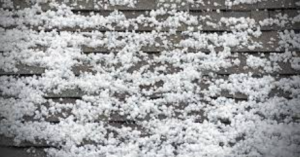Roof Hail Wind Damage Inspections
Roof Hail damage to roofs and buildings. ln many parts of the US, hailstorms are a way of life. For many homeowners, it’s not a question of whether a hailstorm will hit. But when damaging, hail will hit. Areas in the U.SU.S. receive hail six or more times a year, and many homes are damaged yearly. By definition, hail damage is any damage resulting from hailstones and hailstorms. Hailstones that are 0.75 inches or greater are large enough to cause substantial damage to homes. Automobiles & property. For comparison. 075 inches is the diameter of a penny, which can be checked by roof hail damage by professional engineers.
How to Identify Hail Wind Damage effects on roofs
You may think that you don’t have damage just because you can‘t see any signs of wear or because your roof isn’t leaking. Remember, hail damage can be tough to identify. Many homeowners discover significant roofing damage years after it’s too late to file a storm damage claim with their insurance company. If you have any reason to suspect hail damage after a storm, you should have a full property inspection of the hail damage done by a forensic engineer right away.

Roof Hail Damage effects on roofs
Roofs are the most common part of a home or business in hailstorms. An affected shingle may allow water to seep through the roof, causing additional issues to the roof deck, support structure, interior walls, or windows. It can cause leaking, staining on walls, and flooding inside your home. Leaking roofs lead to costs, and many insurance policies have strict time limits on submitting claims after hailstorms. So, if necessary, it‘s in your best interest to act fast after hailstorms and start the repair process.
Hail & Wind Damage Causing Asphalt Shingle puncture:
On an asphalt roof, roof hail damage looks like a dark spot or bruise where the roofing granules have been knocked away (look in gutters for accumulation of granules). Sometimes, you may find holes, cracking, or missing shingles on roofs with roof hail damage. This can result in leaking and serious water leaks, which can lead to mold formation and wood rot, which can compromise the structural integrity of your roof, resulting in collapse. In severe windstorms, it is common for shingles or sections of the roof to be missing altogether. Other Types of Shingle Damage: Shake (wood), metal, tile, and slate roof shingles can all suffer from hailstorms. Due to the materials, each type of shingle shows unique signs of problems from hail. If shingles are cracked, missing, torn, or split at the seams, you should have a damage inspection performed. Similarly, get an assessment immediately if you notice leaking inside your home after a hailstorm.
Siding Damage often results from wind-driven hail. The three most common signs of damage to siding are cracking, chipping, and holes. Hail damage inspections are the answer to various damages that occur.
